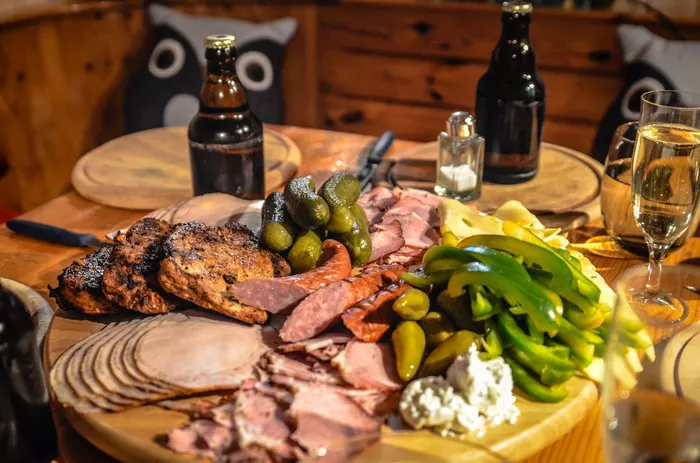Beer, a beverage known for its diverse range of flavors and styles, doesn’t always have to be high in alcohol. In fact, there’s a charming world of low-alcohol beers waiting to be explored. In this article, we’ll introduce you to 10 beers with the lowest alcohol content, offering a refreshing alternative to their higher-proof counterparts. Have you tried any of these delightful brews?
1. Table Beer
ABV (Alcohol by Volume): Typically around 1-3%
Flavor Profile: Table beers are light and easy-drinking, with a mild maltiness and a touch of hops. They’re perfect for extended sessions or pairing with a variety of foods.
2. Berliner Weisse
ABV: Usually around 3-4%
Flavor Profile: Berliner Weisse beers are refreshingly tart and often enjoyed with flavored syrups like raspberry or woodruff. They’re a summer favorite.
3. Gose
ABV: Typically around 4-5%
Flavor Profile: Gose is a lightly sour and slightly salty beer with citrusy and herbal notes. It’s a unique and sessionable option.
4. American Light Lager
ABV: Usually around 4% or less
Flavor Profile: American light lagers are crisp, clean, and exceptionally easy to drink. They are often enjoyed ice-cold on hot summer days.
5. English Bitter
ABV: Typically around 3-4%
Flavor Profile: English bitters are malt-forward with a balanced bitterness. They’re a classic pub choice for those looking for a lower-alcohol option.
6. Mild Ale
ABV: Usually around 3-4%
Flavor Profile: Mild ales are malt-focused with hints of caramel and toffee. They offer a gentle, approachable flavor experience.
7. Belgian Dubbel
ABV: Typically around 6-7%
Flavor Profile: While slightly higher in alcohol compared to others on this list, Belgian dubbels offer rich malty flavors with fruity and spicy yeast characteristics.
8. Scottish 60 Shilling Ale
ABV: Typically around 3-4%
Flavor Profile: Scottish 60 Shilling ales are malt-forward with subtle caramel sweetness. They’re part of Scotland’s session beer tradition.
9. Japanese Rice Lager
ABV: Usually around 3-5%
Flavor Profile: Japanese rice lagers are clean, light, and crisp with a hint of rice sweetness. They pair well with sushi and other Asian dishes.
10. Non-Alcoholic (NA) Beer
ABV: Typically less than 0.5%
Flavor Profile: NA beers come in various styles, replicating the flavors of their alcoholic counterparts while containing minimal alcohol. They’re perfect for those looking for a beer taste without the alcohol.
Conclusion
Low-alcohol beers offer a world of flavors and styles that can be enjoyed without the buzz of their stronger counterparts. Whether you’re looking for a refreshing summer sipper or a beer that pairs perfectly with your favorite dishes, exploring the world of low-ABV beers can be a delightful journey into the lighter side of brewing.
FAQs about low-alcohol beers, along with detailed answers:
1. What exactly is a low-alcohol beer?
Answer: Low-alcohol beer, often abbreviated as “low-ABV” beer, is a type of beer that contains significantly less alcohol by volume (ABV) than regular beers. It typically has an ABV of around 0.5% to 4%, making it a lighter and less intoxicating option.
2. Are low-alcohol beers less flavorful than regular beers?
Answer: Low-alcohol beers can have a wide range of flavors, and their taste is not necessarily less flavorful than regular beers. While some may have milder flavors due to the lower alcohol content, others are crafted to maintain the complexity and character of their higher-ABV counterparts.
3. Are low-alcohol beers suitable for those who don’t drink alcohol at all?
Answer: Low-alcohol beers do contain a minimal amount of alcohol, typically less than 0.5% ABV. While this is significantly lower than standard beers, it’s not completely alcohol-free. Individuals who abstain from alcohol entirely may prefer non-alcoholic or alcohol-free alternatives.
4. Are there specific occasions or meals where low-alcohol beers are best enjoyed?
Answer: Low-alcohol beers are versatile and can be enjoyed in various settings. They are often favored for light lunches, casual gatherings, and situations where moderate alcohol consumption is desired, such as during extended social events or as a refreshing drink on a hot day.
5. Can low-alcohol beers be used in cooking and recipes that call for beer?
Answer: Yes, low-alcohol beers can be used in cooking and recipes that call for beer. They can add flavor and moisture to dishes without contributing significant alcohol content, making them suitable for various culinary applications.
6. Are low-alcohol beers a good choice for designated drivers or individuals who need to stay sober?
Answer: Low-alcohol beers can be an excellent choice for designated drivers and individuals who need to stay sober, as they provide a beer-like taste without the intoxicating effects of regular beers. However, it’s essential to confirm the specific ABV of the beer, as some low-alcohol options may still contain trace amounts of alcohol.
7. Do low-alcohol beers come in various styles, like ales and lagers?
Answer: Yes, low-alcohol beers come in various styles, mirroring the diversity found in regular beers. You can find low-ABV versions of ales, lagers, stouts, and more, each offering its unique flavor characteristics.
8. What is the difference between non-alcoholic (NA) beer and low-alcohol beer?
Answer: Non-alcoholic (NA) beer contains very minimal alcohol, typically less than 0.5% ABV, making it suitable for those who want to avoid alcohol entirely. Low-alcohol beer, on the other hand, can have slightly higher ABV, usually ranging from 0.5% to 4%, offering a lighter alcoholic option.
9. Are there any health benefits associated with drinking low-alcohol beers?
Answer: Low-alcohol beers may offer some of the same potential health benefits associated with moderate alcohol consumption, such as improved heart health. However, excessive consumption of even low-ABV beers can have adverse health effects, so moderation is key.
10. Can low-alcohol beers be aged like regular beers?
Answer: Low-alcohol beers can be aged, but the aging process and results may differ from their higher-ABV counterparts. The flavors and characteristics of low-ABV beers may evolve more slowly due to the lower alcohol content.


